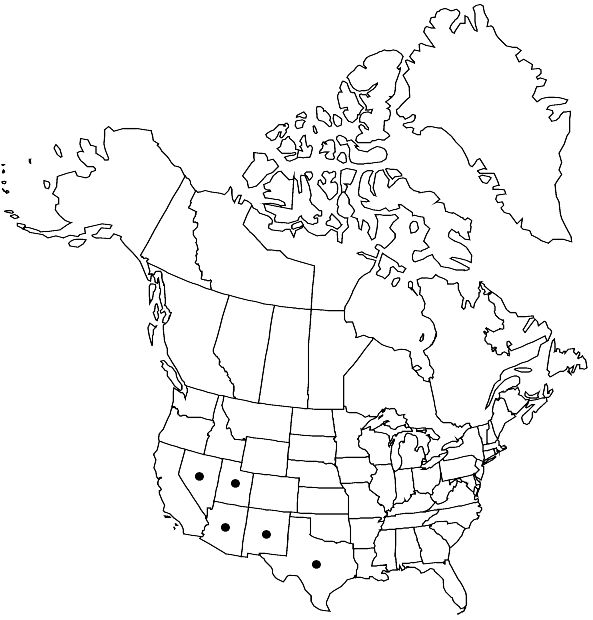Difference between revisions of "Pseudocrossidium crinitum"
Bull. Buffalo Soc. Nat. Sci. 32: 119. 1993,.
FNA>Volume Importer |
FNA>Volume Importer |
(No difference)
| |
Revision as of 19:41, 24 September 2019
Stems to 1.5 cm. Stem leaves ovate to short-lanceolate, 1.5–1.9 mm including the awn, distal margins strongly recurved to once revolute; apex rounded-obtuse below the awn; costa ending in a short awn, adaxial surface of costa at mid leaf concave, with 4 guide cells; distal laminal cells 12–15 µm wide, 1:1. Specialized asexual reproduction absent. [Perichaetial leaves not differentiated.] Sporophytes not seen.
Habitat: Soil, sand, sandstone, limestone, basalt, shale, boulders, ledges, deserts
Elevation: moderate to high elevations (500-2000 m)
Distribution

Ariz., Nev., N.Mex., Tex., Utah, Mexico, South America, Africa, Australia.
Discussion
Pseudocrossidium crinitum, when the awn is short, can be distinguished from P. replicatum (forms of which may have strongly mucronate leaf apices) by the large area of differentiated parenchymatous cells on the abaxial lateral surface of the costa on both sides adjacent to the laminal insertion on the costa, easily seen in section at mid leaf and often deep yellow in color, appearing as a row of ocelli; the leaf marginal cells are very thin-walled. This essentially southern species reaches its northern range extension in western United States E. B. Bartram 1924; R. H. Zander 1993). An exceptionally robust collection of P. crinitum from Mexico (Puebla, Azumbilla, Zander 4899, BUF) has two layers of guide cells in the costa, but this is very unusual.
Selected References
None.
